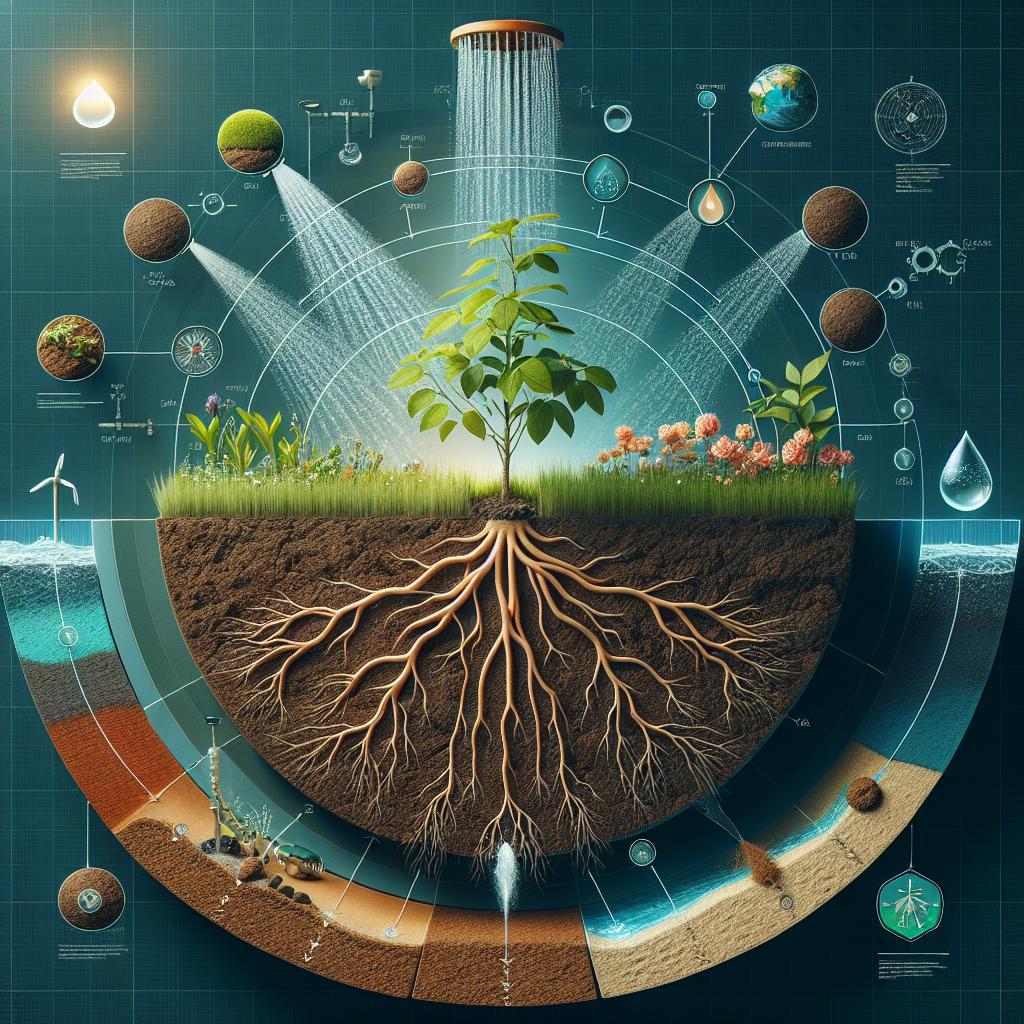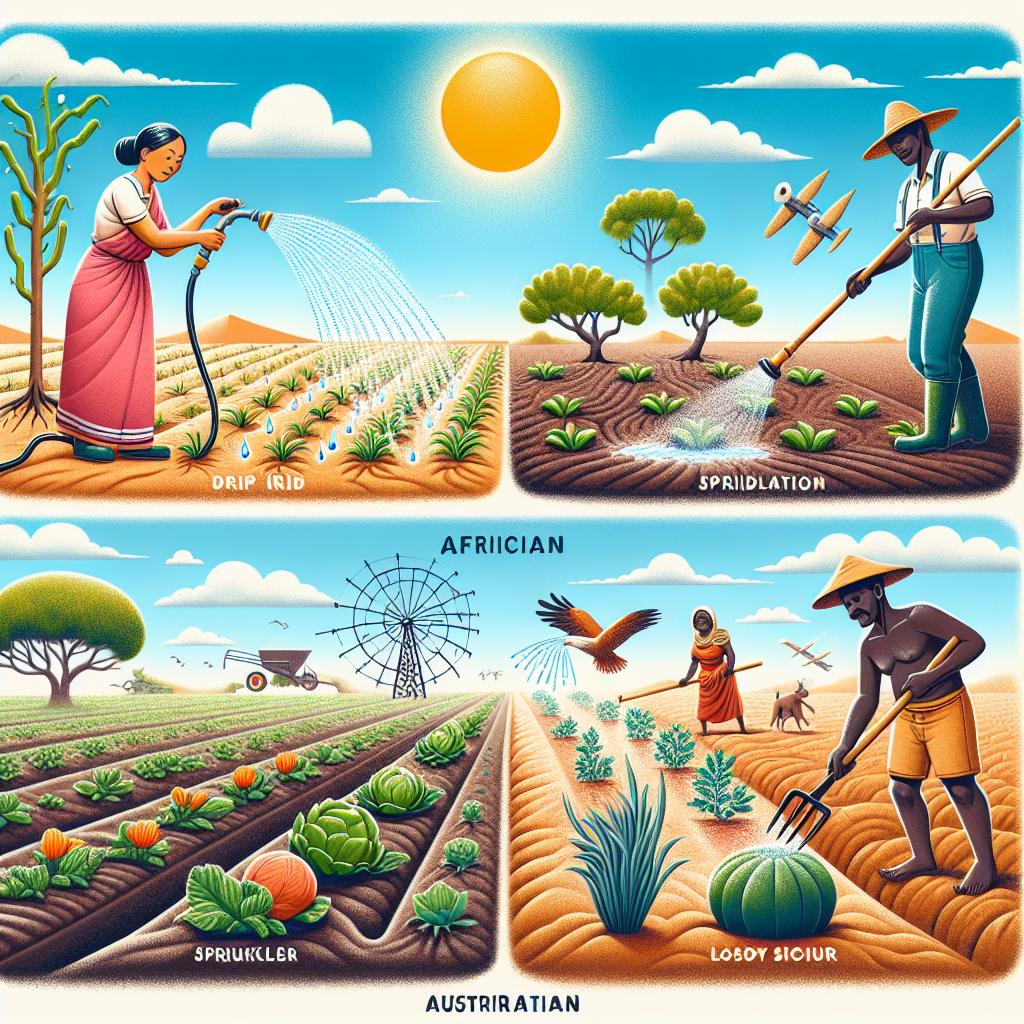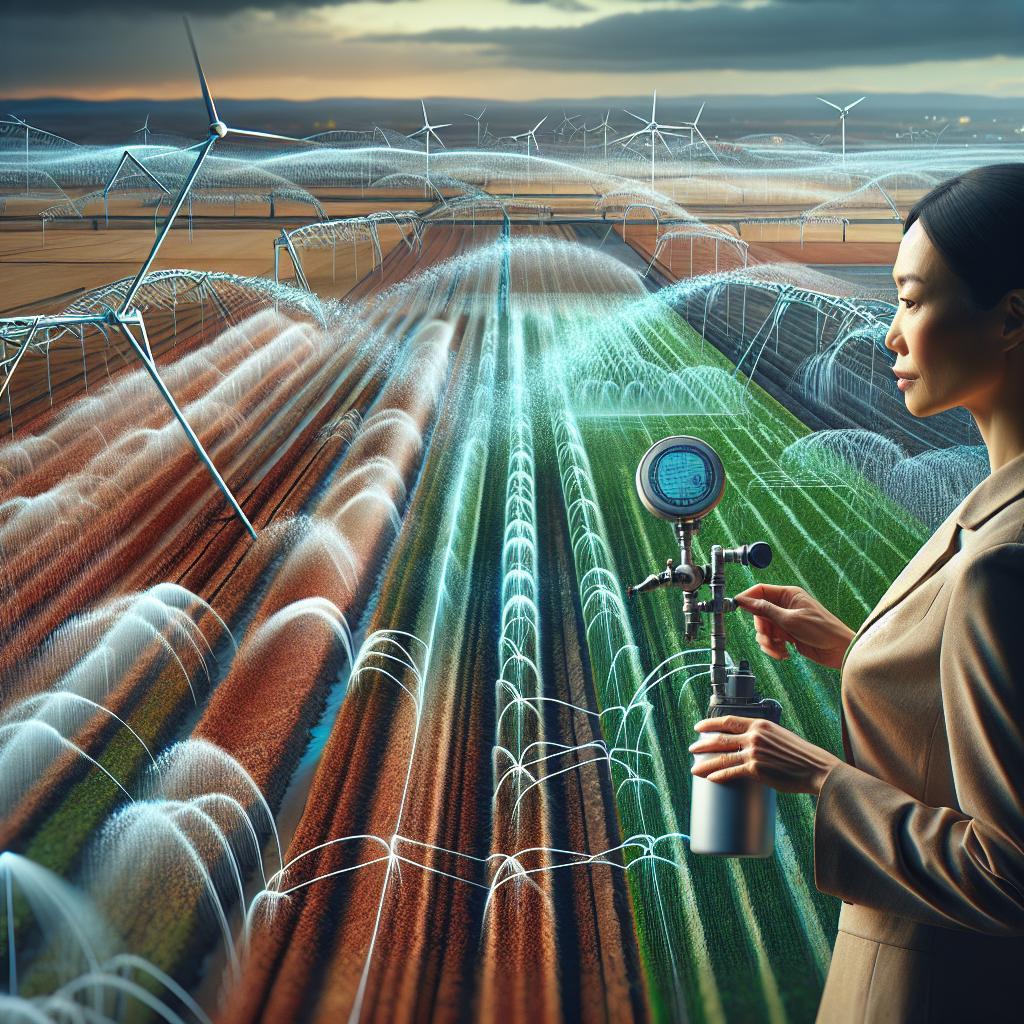This post may contain affiliate links which means I may receive a commission for purchases made through links. Learn more on my Private Policy page.
introduction:
Picture this: a lush, thriving patch of farmland under the warm sun, plants swaying gently in the breeze, thier roots soaking up the perfect amount of moisture. Now, imagine the opposite—barren patches of land, crops struggling for life due to too little or too much water. This visual dichotomy highlights a critical issue faced by farmers and landowners: soil moisture variability.As we navigate the complexities of irrigation system design, understanding and addressing this variability is essential to ensuring sustainable farming practices and cultivating healthy, robust crops. In this article, we’ll explore the interesting world of soil moisture, delve into innovative irrigation methodologies, and discover how a thoughtful approach to design can turn our farms into verdant oases. So, grab your watering can and join us on this journey to greener pastures—literally and metaphorically!
Understanding Soil Moisture Dynamics for Effective Irrigation
Soil moisture dynamics play a crucial role in determining the effectiveness of any irrigation system. Understanding how moisture moves and fluctuates within the soil can greatly enhance the efficiency of water use in agriculture. factors that influence soil moisture include:
- Soil Texture: The composition of sand, silt, and clay affects water retention and drainage.
- Root Depth: Deeper roots can access moisture that is unavailable to shallow-rooted plants.
- Weather Patterns: Rainfall and temperature changes impact evaporation rates and moisture levels.
To design an effective irrigation system, it’s essential to assess the variability of soil moisture across different areas of a field. Utilizing soil moisture sensors can provide real-time data to inform irrigation schedules.Additionally, consider implementing:
| Method | Description |
|---|---|
| Drip Irrigation | Targets roots directly, minimizing water waste. |
| Rainwater Harvesting | Collects and stores rainwater for irrigation use. |
| Soil Moisture mapping | Identifies moisture variability and irrigation needs. |

Tailoring Irrigation Techniques to meet Diverse Soil Needs
Understanding soil variability is essential for developing effective irrigation systems that cater to the unique moisture requirements of various terrains. Since different soil types—such as sandy, loamy, and clay—possess distinct infiltration rates and water retention capacities, utilizing a one-size-fits-all approach to irrigation can lead to inefficiencies and lower crop yields. Tailoring irrigation techniques not only enhances soil health but also conserves precious water resources.Some strategies to consider include:
- Drip Irrigation: Ideal for sandy soils, allowing for precise water delivery directly to the root zone.
- Surface Irrigation: Suitable for loamy soils with moderate infiltration rates, offering a balance of efficiency and simplicity.
- Subsurface Irrigation: Effective for clay soils, minimizing water evaporation and reducing surface runoff.
To facilitate the selection of appropriate irrigation methods, a simple table summarizing soil characteristics and the most suitable irrigation techniques can be helpful:
| Soil Type | infiltration Rate | Recommended Irrigation Method |
|---|---|---|
| Sandy | Fast | Drip Irrigation |
| Loamy | Moderate | Surface Irrigation |
| Clay | Slow | Subsurface Irrigation |
By adopting a more nuanced understanding of soil moisture variability, irrigation systems can be fine-tuned to enhance agricultural productivity and sustainability. Innovating the right blend of techniques will ensure that diverse soil needs are met while preserving the habitat for future generations.

Innovative Technologies for Monitoring Soil Moisture Variability
In recent years,the growth of innovative technologies has transformed the way we approach soil moisture monitoring,offering unparalleled accuracy and efficiency. Traditional methods often rely on sporadic manual sampling, wich can miss crucial variations in soil moisture levels.Though, advancements such as drone technology and remote sensing are enabling farmers and agronomists to capture real-time data across vast areas. These methods not only provide high-resolution images of moisture variability but also allow for the integration of data analytics, turning raw information into actionable insights for irrigation management.
Another exciting innovation is the use of soil moisture sensors that integrate seamlessly with IoT (Internet of Things) platforms. these sensors can be buried directly in the soil, supplying continuous feedback to centralized systems that can automatically adjust irrigation schedules. Additionally, utilizing machine learning algorithms helps predict soil moisture fluctuations based on historical data and current meteorological conditions. This proactive approach can lead to optimized water usage, reduced waste, and ultimately a more sustainable agricultural practice. The emerging tech landscape is not just enhancing efficiency, but is also paving the way for environmentally friendly farming practices.

Practical Tips for Optimizing Your Irrigation System Design
To effectively optimize your irrigation system design, start by conducting a comprehensive soil moisture analysis. This should include an assessment of varying soil types across your landscape. Different soils retain moisture differently, leading to uneven irrigation needs. Some key steps to consider include:
- Conducting soil tests: Understand soil textures and their water-holding capacities.
- Mapping moisture zones: Use moisture sensors at various depths to identify dry and saturated areas.
- Utilizing historical data: Analyze past weather patterns and their impacts on soil moisture levels.
Another crucial aspect is the integration of modern technology. Employ techniques such as drip irrigation or smart controllers to deliver precise amounts of water were it’s needed most. incorporate the following strategies for improved water management:
- Rain sensors: Adjust watering schedules based on rainfall, minimizing over-irrigation.
- Zone irrigation: Create sub-sections in your landscape that require different watering schedules.
- regular monitoring: Use soil moisture meters to track real-time moisture levels and adjust the system accordingly.
| Soil Type | Water Holding Capacity |
|---|---|
| Sandy Soil | Low |
| Loamy soil | Moderate |
| Clayey Soil | High |
Key Takeaways
as we dig into the complexities of soil moisture variability in irrigation system design, it’s clear that the journey toward efficient water management is both an art and a science. By understanding the intricate dance between soil types, moisture levels, and irrigation methods, we can create systems that not only nourish our crops but also conserve our precious water resources. Remember, each patch of soil tells a story, and by listening closely, we can tailor our irrigation practices to meet its unique needs.
As you embark on your own irrigation projects, consider this: every decision you make—whether it’s the type of irrigation system, the timing of application, or the monitoring techniques you employ—can make a profound difference in the health of your plants and the sustainability of your practices. So,grab your shovel,roll up your sleeves,and let’s work together to cultivate a future where every drop counts. Happy irrigating!
This post may contain affiliate links which means I may receive a commission for purchases made through links. Learn more on my Private Policy page.

